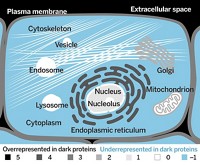Advertisement
Grab your lab coat. Let's get started
Welcome!
Welcome!
Create an account below to get 6 C&EN articles per month, receive newsletters and more - all free.
It seems this is your first time logging in online. Please enter the following information to continue.
As an ACS member you automatically get access to this site. All we need is few more details to create your reading experience.
Not you? Sign in with a different account.
Not you? Sign in with a different account.
ERROR 1
ERROR 1
ERROR 2
ERROR 2
ERROR 2
ERROR 2
ERROR 2
Password and Confirm password must match.
If you have an ACS member number, please enter it here so we can link this account to your membership. (optional)
ERROR 2
ACS values your privacy. By submitting your information, you are gaining access to C&EN and subscribing to our weekly newsletter. We use the information you provide to make your reading experience better, and we will never sell your data to third party members.
Biological Chemistry
A Pathogen’s Biochemical Mesh
Systems Biology: Study reveals that mycoplasma pneumoniae does more with less
by Sarah Everts
November 30, 2009
| A version of this story appeared in
Volume 87, Issue 48

An extensive systems biology evaluation of the pathogen Mycoplasma pneumoniae reveals that the bacterium has more sophisticated biochemical circuits than expected of an organism with so few genes. The comprehensive proteomic, transcriptomic, and metabolomic analysis of the pneumonia-causing bacterium sets a new standard for systems biologists seeking to understand the underpinnings of a biological cell. It also provides new information that could help design drugs against the pathogen.
In three back-to-back Science papers (2009, 326, 1235, 1263, and 1268), scientists reveal that M. pneumoniae has “features of transcription controls and protein organization that are much more subtle and intricate than were previously considered possible in bacteria and, in many ways, appear similar to mechanisms in eukaryotes,” Howard Ochman and Rahul Raghavan of the University of Arizona, Tucson, write in an associated commentary.
The bacterium’s sophistication came as a “big surprise,” says Anne-Claude Gavin, a biochemist at the European Molecular Biology Laboratory (EMBL), in Heidelberg, Germany, who led one of the studies, because M. pneumoniae has an especially small genome. With less than 700 genes, its genome is far smaller than that of Escherichia coli, which has about 4,000 genes, typical for most bacteria. The fact that M. pneumoniae achieves such complexity from such a stripped-down genome may make it a new model organism, she adds.
Gavin collaborated with a huge team of researchers, including Luis Serrano at the Catalan Institute for Advanced Research & Study and Peer Bork at EMBL, to obtain a snapshot of protein localization in M. pneumoniae. Using a combination of X-ray crystallography, tomography, and electron diffraction, the team found that proteins such as the ribosome are partitioned away from a rodlike area of the cell essential for infection, even though the bacterium does not possess organelles typically used for segregation. The team also discovered that M. pneumoniae is particularly good at multitasking, possessing many enzymes that can perform a multitude of reactions, leaving “few redundancies” that are often observed in higher organisms, Ochman adds.




Join the conversation
Contact the reporter
Submit a Letter to the Editor for publication
Engage with us on Twitter